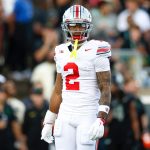The NBA finds itself in a paradoxical position: the league boasts unparalleled skill and competitive balance, yet it grapples with a toxic discourse that dampens fan enthusiasm and impacts viewership. While the on-court product is arguably at its peak, the narrative surrounding the league, largely shaped by its broadcast partners, often focuses on negativity, rumors, and a perceived decline in the quality of play. This disconnect between the reality of the game and its portrayal contributes to a dwindling audience that tunes out when the pre-game analysis ends and the actual basketball begins. A significant portion of the fanbase seems more invested in the drama off the court than the captivating performances on it.
A key contributor to this negative perception is the coverage style adopted by the NBA’s broadcast partners. Instead of celebrating the athleticism, skill, and strategic nuances of the game, broadcasts often dwell on criticisms, fueling a narrative of decline. This constant negativity, coupled with an overemphasis on a handful of marquee teams and incessant speculation about player movement, alienates casual fans and reinforces the idea that only a few teams are worth watching. This approach ignores the league’s remarkable parity and the compelling storylines emerging from smaller markets. The lack of positive storytelling and the failure to showcase the league’s diverse talent pool contribute to the perception that the NBA is less exciting than it actually is.
Another contributing factor is the failure of many in the media to adapt to the evolution of the game. While the NBA has become more dynamic and strategically complex, the analysis offered often lags behind, failing to explain the intricacies of modern offenses, defensive schemes, and in-game adjustments. While some may point to the high volume of three-point shots as evidence of a homogenized playing style, this overlooks the diverse ways teams generate these shots and the increased emphasis on paint scoring that has accompanied the analytical revolution. The narrative of a simplified game fails to capture the sophisticated strategies and exceptional skill required to succeed in the modern NBA.
The NBA’s declining domestic TV ratings have sparked much debate, with some blaming the increased reliance on three-pointers and others pointing to the broader changes in media consumption. While LeBron James has voiced concerns about the volume of threes, his own coach, JJ Redick, argues that the league is far more diverse and skilled than it’s given credit for. Redick advocates for a more celebratory approach to broadcasting, one that highlights the positive aspects of the game while still offering insightful critiques. This approach, he believes, would cultivate a more engaged and informed audience. The narrative around the NBA needs to shift from lamenting perceived flaws to celebrating the incredible talent and competitive balance that define the league.
Furthermore, the NBA’s success outside the United States often gets overlooked in the discussion of declining ratings. The league enjoys immense popularity globally, with a majority of its viewers residing outside the U.S. This international growth suggests that the NBA’s product is resonating with fans worldwide, even as domestic viewership faces challenges. This global popularity underscores the need for a more nuanced understanding of the league’s audience and the diverse ways in which fans consume basketball content. Focusing solely on domestic TV ratings paints an incomplete picture of the NBA’s overall reach and influence.
As media consumption habits evolve, the NBA must adapt its strategies to engage younger audiences who increasingly turn to social media and online platforms for their basketball fix. The league’s growing social media presence indicates a strong and持续的 interest in the game, even if traditional TV viewership is declining. This shift requires a more comprehensive approach to content creation and distribution, leveraging digital platforms to reach fans where they are. The NBA needs to embrace the changing landscape of media consumption and adapt its strategies to cater to the preferences of modern fans. This includes creating engaging content for social media, enhancing streaming options, and providing more interactive viewing experiences. By embracing innovation and adapting to the evolving media landscape, the NBA can cultivate a new generation of fans and ensure its continued growth and success.



